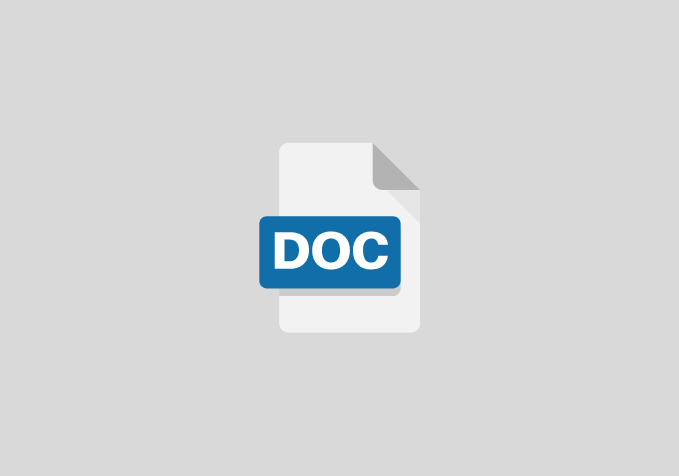A Proposal on Relationship Between Work Stress and Deviant Workplace Behaviour Among Contract Bank Employees in Lagos State.
Objective of the study
The following objectives will be ascertained
- To establish the relationship between work stress and deviant workplace behaviours among contract bank employees in Lagos state
- To deduce a theoretical framework that could be used to effectively address workplace deviant behaviours in the Nigerian banking industry.
- To find out whether stress of contract bank employee reduce job satisfaction and increases deviant workplace behavior in the banking sector
Related literature review
This segment of the paper elaborates on a few theories related to work stress and provides definitions for the concepts of work stress and workplace deviant behaviours. Moreover, it reviews existing body of work on the relationship between work stress and workplace deviant behaviours in the Nigerian banking industry.
Effort-Reward Imbalance (ERI)
Theory This theory lays prominence on the stressful characteristics of the work contract. The theory is founded on the understanding of mutual benefit or social reciprocity, a basic norm of every type of transaction characterised by some form of harmony (Siegrist, 2010). Social reciprocity is about distinctive duties, which are discharged in exchange for suitable rewards. These rewards could be promotion, esteem, job security and/or money (Siegrist, 2010). Unsuccessful reciprocity such as high costs and low gain, result in highly adverse reactions, such as workplace deviant behaviour (Siegrist, 2010)
RESEARCH DESIGN AND METHODOLOGY
The researcher used descriptive research survey design in building up this project work. The choice of this research design was considered appropriate because of its advantages of identifying attributes of a large population from a group of individuals. The design was suitable for the study as the study sought to relationship between work stress and Deviant workplace Behaviour among contract Bank Employees in Lagos state.
METHOD OF DATA ANALYSIS
The researcher will employ oral and direct interview in administering this research questions. Responses from the respondents were needed unlike questionnaires, which is less rewarding due to late receipt and loss of responses from respondents. The method of data analysis that will be used by the researcher is the simple percentage. More so, percentage and degrees of the responses will also be used in the analysis. Here, the ratio of those whose responses were not in the affirmative will be found and conclusions will be drawn there upon. Representations of the level of responses will be made in tabular form. The Statistical Package for Social Sciences (SPSS) software will be used to test the hypotheses.
References
- Agnew, R. (2006). General strain theory: Current status and directions for further research. Taking Stock: The Status of Criminological Theory, 15, 101-123. https://doi.org/10.4324/9781315130620-4
- Ahsan, N., Abdullah, Z., Fie, D. G., & Alam, S. S. (2009). A study of job stress on job satisfaction among university staff in Malaysia: Empirical study. European Journal of Social Sciences, 8(1), 121-131.
- Ajayi, G. O. (2003). NITDA and ICT in Nigeria. Unpublished Contribution Delivered at the Round Table on Developing Countries Access to Scientific Knowledge (2003 Italy).
- Akrani, G. (2011). What is stress? meaning, definition, and causes of stress. Industrial Psychology.Htpp://kalyan-City.
- Blogspot. Com. Retrieved October, 13, 2014. Akingunola, R., & Adigun, A. (2010). Occupational stress and the Nigerian banking industry. Journal of Economics and Engineering, 2 (2), 43-61.
- Appelbaum, S. H., Deguire, K. J., & Lay, M. (2005). The relationship of ethical climate to deviant workplace behaviour. Corporate Governance: The International Journal of Business in Society, 5(4), 43-55. https://doi.org/10.1108/14720700510616587
- Appelbaum, S. H., Iaconi, G. D., & Matousek, A. (2007). Positive and negative deviant workplace behaviors: Causes, impacts, and solutions. Corporate Governance: The International Journal of Business in Society, 7(5), 586-598. https://doi.org/10.1108/14720700710827176
- Aquino, K., Galperin, B. L., & Bennett, R. J. (2004). Social status and aggressiveness as moderators of the relationship between interactional justice and workplace deviance. Journal of Applied Social Psychology, 34(5), 1001-1029. https://doi.org/10.1111/j.1559-1816.2004.tb02581.x
- Ayodele, K., & Bello, A. (2008). Reduction of bullying behavioural tendencies among secondary school students: A multiple regression analysis. International Journal of Multidisciplinary Research, 1(1), 146-151.
- Babbie, E., & Mouton, J. (2010). The practice of social research. (10th Ed.), Republic of South Africa, Oxford University Press, Southern Africa.


